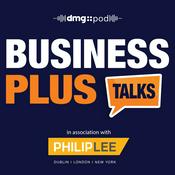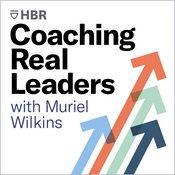329 episodes

What Should Contact Centres Do First to Prepare for Agentic AI?
09/12/2025 | 24 mins.
As companies rethink how they provide customer experiences (CX), a new form of AI capability, agentic AI, is quickly changing how work is accomplished in contact centres. In the recent episode of the Tech Transformed podcast, Dialpad Lead Product Manager Calvin Hohener sits down with host Jon Arnold, Principal at J Arnold & Associates. They discuss the transition from legacy chatbots to more autonomous agents capable of completing tasks and improving customer interactions.The conversation highlights the importance of understanding the technology's impact on enterprise architecture, the need for clean data, and the strategic implications for C-level executives. Hohener emphasises the importance of starting with clear use cases and working closely with vendors to maximise the potential of AI in business operations.From Legacy Chatbots to Agentic AIMost people have used chatbots and found them lacking. Hohener explains why: earlier conversational AI was based on retrieval-augmented generation (RAG). These systems could take user input, search a knowledge base or the internet, and provide an answer. This was helpful for customer service queries, but limited.“Previous AI models could retrieve and return information, but now we’re moving into a new phase with agentic AI.” Agentic AI can take action rather than just providing information. For AI agents to succeed, organisations must first organise their data. “How your internal knowledge is structured is crucial. Even if the data is unorganised, you need to know its location and ensure it’s clean,” stated Hohener.Agentic systems depend on internal knowledge, including knowledge base articles, CRM notes, and process documentation. If this foundation is disordered, the agent’s output will not be reliable. This isn’t about achieving ideal data cleanliness from the start; it’s about knowing what information exists, where it is, and whether it can be trusted. If an AI agent bases its decisions on outdated, conflicting, or incomplete content, it will struggle to perform tasks aptly, regardless of how sophisticated the model is. Enterprises need at least basic clarity about which systems hold which knowledge, who is responsible for them, and whether there is consistency across sources.Hohener noted that organisations often overlook how quickly conflicting information can undermine an otherwise well-designed agent. A single outdated procedure or mismatched policy in a knowledge repository can lead an AI to produce incorrect results or halt during workflow execution. Keeping internal content clean, deduplicated, and consistent gives the agent a reliable, valid source. This reliability becomes crucial when AI starts taking meaningful actions, not just providing answers.By focusing on data readiness early, enterprises not only reduce deployment obstacles but also set the stage for scaling agentic AI across more complex processes. In many ways, preparing data isn’t just a technical task; it’s an organisational one. How Human Agents Work with AI Agents?The Dialpad Lead Product Manager noted that human roles, too, will evolve with agentic AI entering the contact centre. For instance, human agents will take on more of an advisory role—reviewing conversation traces and helping adjust the models.”Instead of...

The AI-Ready Data Core: Creating the Foundation for Intelligent Systems
09/12/2025 | 26 mins.
As AI becomes a central pillar of business decision-making, enterprises face a new challenge, and that is making their data AI-ready. It’s no longer enough to collect and digitise information. For organisations, data must be structured, contextualised, discoverable, and usable—both by humans and intelligent systems.AI can only deliver if your data is truly ready, but most enterprises are drowning in fragmented, incomplete, or slow-to-update data. In this episode of Don't Panic, It's Just Data, host Doug Laney and Sushant Rai, Vice President of Product of AI and Data Strategy at Relito, explore how modern data unification strategies are changing enterprises, enabling AI to deliver faster, more reliable insights. They focus on the shift from traditional Master Data Management (MDM) to next-generation AI-ready data cores, uncovering the risks of fragmented data and the strategies to overcome them.Why AI-Ready Data MattersAI, especially large language models (LLMs), is changing how people interact with data. Analysts, executives, and frontline teams now expect natural language queries and instant, actionable insights.Sushant explains:AI performs at its best when it has full context, empowered with the right data. This allows AI agents to make decisions and take actions on behalf of your business.When you embed intelligence into your data layer, AI can help you manage and scale your data without drowning your teams in manual work. This will only work if your data is structured, clean, governed, and constantly updated, everything that makes it truly AI-ready.The Data Scale ChallengeThe volume of data being turned over daily is staggering. As Sushant notes:The amount of data getting generated every single day is so massive that there’s no way to keep up without AI. Even the largest organizations, with massive data stewardship teams, can’t catch up manually.This gap is driving the change in the modern data platforms, where AI automates stewardship, enriches data continuously, detects anomalies, and maintains quality in real time.Want to learn more about modern data unification and AI-ready platforms? Visit Reltio.com for insights, resources, and case studies.TakeawaysData unification provides a trusted, real-time view of key business elements.Organizations must balance speed and trust in data management.Classic MDM is evolving into modern data unification platforms.Real-time data access is crucial for AI and analytics.AI can enhance data quality and governance processes.Successful data initiatives require clear business outcomes and ownership.Data unification should be viewed as a business platform, not just an IT project.AI agents will play a significant role in automating data governance.Organizations need to focus on both structured and unstructured data.The future of data management involves continuous unification and enrichment of...

Breaking Free from Busywork: AI and the Future of Profitable Client Delivery
08/12/2025 | 24 mins.
Client service teams are at a breaking point. Margins are shrinking, the demand keeps rising, and much of the day is consumed by work that doesn’t move the needle. As a result, skilled people often spend hours reconciling spreadsheets, re-entering the same data across multiple systems, and chasing updates, time that should be spent on the work clients actually pay for. Every hour lost to manual admin is an hour of revenue slipping away. In this day and age, that’s a hit no business can afford.AI isn’t just a buzzword here; it’s a practical lever. It can cut through the repetitive tasks that slow teams down, surface the information they need instantly, and free them to focus on high-value work. The companies winning aren’t replacing staff; they’re removing the obstacles that keep people from doing their best. In a world where speed and accuracy matter more than ever, ignoring that shift isn’t optional.In the latest episode of Tech Transformed, hosted by Christina Stathopolus, founder of Dare to Data, Daniel Mackey, CEO of Teamwork.com, discussed how AI is reshaping the daily operations of client service teams. From automating repetitive admin tasks to surfacing critical information faster, AI is giving teams the bandwidth to focus on the work that truly drives value for clients. AI and Business Transformation in PracticeDuring the conversation, Mackey highlighted how AI is reshaping business operations, emphasising efficiency and productivity rather than job displacement. “AI has transformed our company,” he noted, pointing to tangible improvements across workflow and project management. Teams are now able to focus on strategic initiatives, leaving repetitive tasks to intelligent systems.The Teamwork.com CEO also shared a recent example from a government agency that integrated AI into its processes. By automating routine administrative work, the agency experienced better resource allocation and improved project outcomes. “They’re more efficient, higher quality,” Mackey said. “AI allows them to focus on the bigger parts of the business.”Rethinking Productivity and Client DeliveryOne of the challenges in the industry is that most AI features are added onto existing tools that weren’t designed for client services. Mackey discussed how TeamworkAI addresses this gap. Built into a platform designed specifically for managing client services end-to-end, TeamworkAI connects projects, people, and profits in one system.By integrating AI directly into client delivery workflows, organisations can streamline project management, reduce manual reporting, and ensure that technology enhances rather than disrupts service delivery. This approach allows businesses to use technology strategically, rather than simply automating isolated tasks.Technology and the Future of WorkThe discussion also touched on the broader impact of AI on traditional business models. Organisations that adopt AI thoughtfully can improve their internal processes, freeing employees from repetitive tasks and enabling them to contribute to higher-value projects. Mackey emphasised that the goal isn’t just automation, it’s profitable client delivery. AI can unlock both time and insight, allowing businesses to prioritise the most impactful work.AI is redefining how businesses allocate resources, manage projects, and deliver value to clients. By eliminating repetitive work and connecting projects,...

How Generative AI is Transforming Customer Experience Today
04/12/2025 | 22 mins.
With the rapid evolution of Generative AI, customer experience (CX) is evolving rapidly, too. In a recent episode of the Tech Transformed podcast, Mike Gozzo, Chief Product and Technology Officer at Ada, sat down with host Christina Stathopoulos, Founder of Dare to Data. They talked about how generative AI is changing business-to-customer interactions.“I view it not just as a business opportunity, but we are here to solve a problem that has existed as long as commerce has,” Gozzo said. He emphasised that AI's goal isn’t just efficiency. It is about building trust and clearly understanding customer needs to allow productive interactions.Artificial intelligence, he noted, “has really enabled what used to be much more costly to happen at scale.” The Ada Chief Product and Technology Officer pointed out that the best customer experiences are highly personalised. Comparing it to arriving at a luxury hotel where the staff already knows your name, even on your first visit. He noted that modern AI aims to make such experiences, which were once only for a select few, common for everyone.Looking to the future, Gozzo tells Stathopoulos he believes generative AI will foster more engagement between customers and brands. “If I consider the trend, I think we will have much more natural, personalised, and effortless interactions than ever before because of this technology.”Gen AI’s impact on Customer Data When discussing operational challenges, especially regarding customer data management, the guest speaker stressed quality over quantity. Gozzo explained that in most AI set-ups, “the real value lies not in the data you’ve collected, but in the understanding of how your business runs, operates, and the people doing the tasks you want to automate.”Governance, Human Orchestration & the Future of AIBeyond personalisation, AI should be implemented responsibly and monitored closely. “The first thing with any AI deployment is to avoid thinking of it as software you buy, deploy, and forget. They need ongoing monitoring, engagement, and maintenance,” Gozzo tells Stathopoulos. He suggested thorough testing processes and collaboration with specialised companies like AIUC, which verify AI systems against common risks. “These tests need to happen quarterly or yearly because the underlying models change so rapidly,” he added.In addition to regularly conducting AI checks, the human element is also critical. AI might automate up to 80% of routine tasks, but humans will still play a vital role. Gozzo described the human role as that of an orchestrator, managing teams that include both humans and AI systems and effectively delegating tasks between them.Finally, Gozzo talked about AI's immediate impact on customer experience. “Our leading customers’ AI agents are outperforming humans. They deliver higher-quality customer service experiences, and customers prefer interacting with their AI.” The key measure, he said, is the positive effect on business growth and customer lifetime value.The chief technology officer’s parting advice to IT decision makers is: “The people on your team know how to make AI work. Capture their insights. Don’t treat this as a technology project. The technologist will not dominate the next decade. This is about business leaders and experts doing the heavy lifting.”At the core of generative and agentic AI, Gozzo...

The 3G Sunset Worldwide: How Enterprises Can Avoid Device Disruption
03/12/2025 | 18 mins.
The era of 3G is ending. For many industrial businesses, smart infrastructure systems, remote device management, and IoT connectivity rely on networks that are now being phased out globally. The question isn’t if—but when your operations could be disrupted.In this episode of Tech Transformed, Trisha Pillay speaks with Jana Vidis, Business Development Manager at IFB, about the worldwide 3G sunset, what it means for enterprises, and how proactive planning can prevent costly disruptions. They explore the reasons behind the transition to 4G and 5G, the impact on various industries, and the strategies organisations can implement to assess their reliance on legacy devices. Why the 3G Sunset Matters3G networks have powered connectivity for decades, offering wide coverage and reliability. But as global operators move to 4G and 5G, maintaining 3G is no longer sustainable. Carriers are discontinuing services, and support is dwindling, leaving legacy devices vulnerable to:Operational downtimeInconsistent performanceIncreased security risksJana emphasises:“Have a good understanding of what devices you have. Work with IT partners to prepare for future changes. Plan your transition and act before disruption hits.”Jana also stressed the importance of understanding current technology deployments, planning for transitions, and future-proofing investments to avoid disruptions. The conversation highlights the need for proactive measures in adapting to technological advancements and ensuring operational continuity.A Global TimelineThe transition is already well underway across multiple regions:North America: AT&T, Verizon, and T-Mobile 3G networks discontinued in February 2022; Canada’s shutdown begins in early 2025.Europe: Most countries, including the UK, Germany, Hungary, and Greece, will complete shutdowns by the end of 2025.Asia: Japan phased out 3G in 2022, Singapore in July 2024, and India plans completion by the end of 2025.Africa: South Africa started in July 2025; other countries are slowing the transition.South America: Providers like Telefonica, Entel, and Claro completed shutdowns in 2022–2023.Middle East: Oman started shutting down in July 2024; Zain Bahrain in Q4 2022; Kuwait, Iran, and Jordan are following.Industrial devices still using 3G must transition now to avoid operational disruption. From smart infrastructure to remote IoT systems, legacy devices left unaddressed can cause downtime, inconsistent performance, and increased security risks.Takeaways3G networks are being phased out to enable 4G and 5G development.Businesses must assess their reliance on 3G devices before shutdowns.Legacy devices can
More Business podcasts
Trending Business podcasts
About Tech Transformed
Listen to Tech Transformed, The Ramsey Show and many other podcasts from around the world with the radio.net app

Get the free radio.net app
- Stations and podcasts to bookmark
- Stream via Wi-Fi or Bluetooth
- Supports Carplay & Android Auto
- Many other app features
Get the free radio.net app
- Stations and podcasts to bookmark
- Stream via Wi-Fi or Bluetooth
- Supports Carplay & Android Auto
- Many other app features


Tech Transformed
download the app,
start listening.

































